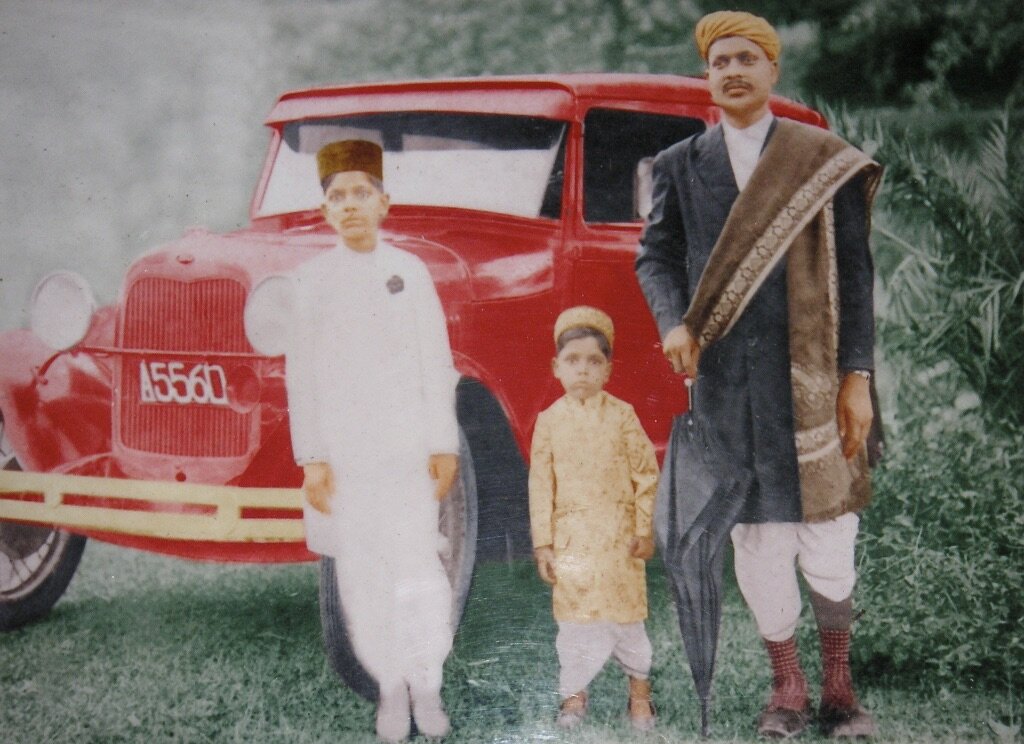Photo of Bilasiram and family taken in the 1930s in our haveli (Bilasiram in the center, Sitaram and Brahmadutt to his right, Gajadhar, Jagannath, and Kesardev to his left)
The Tibrewal Family in Assam
Our family is from Lakshmangarh in the Shekhawat region of Rajasthan. The “Tibra-wala” name comes from the fact that we used to live right next to a “Tibba”, or a sand dune. In the late 1800s, there was abject poverty and severe famine there. Ganeshdas Bilasiram, the two sons of Roodmal Tibrewala, came to Assam to figure out a means for living and support the family back in Lakhmangarh. The entire Tibrewal family in Assam are descendants of Ganeshdas Bilasiram.
Ganeshdas came to Assam first around 1890 and was followed by Bilasiram. Traveling to Assam posed its own challenges in those times. Travellers had to ride on camels, walk, board crowded trains (where they paid porters to shove them inside), and travel on boats (that had to fight against Brahmaputra’s strong currents). It took them many months to reach Assam. The conditions were primitive in Assam. It is said that the local people cover themselves with banana leaves and ate mostly rice.
Ganeshdas died at an early age. Bilasiram is credited with setting up the business in Assam. At the peak of his success, we had a network of 5 rice and oil mills and 28 trading outposts. The family owned 2,500 acres of land. The family maintained their ancestral home (haveli) in Rajasthan and traveled to Assam for months at a time to take care of business (the photo above was taken in our haveli) until the 1940s. The family started separating in the 1960s and some of the branches have been more successful than the others. Some of the family members have moved out of Assam but most of them continue to live in Assam.
Ramkumar and his two sons (Vishunath and Radheshyam) next to one of the first cars in Assam
OUR HAVELI

The Marwaris from Shekhawat
The Tibrewal family share our history with scores of other Marwari families. The Marwaris from Shekhawat (an area about 100 km radius) went from poverty in ~1850 to the control of more than half of the private economy in India by ~1950. Click here to learn more.














